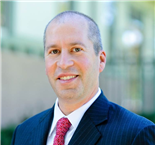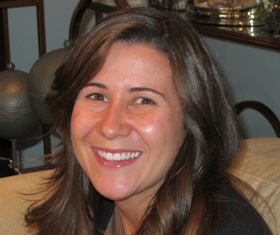Hoops hero Bill Walton to tout life-saving spine surgery at free Vail Valley event
“When I was 14 I tore up my knee playing ball and I had my first of what has turned out to be 37 orthopedic operations,” Walton said by phone recently. “When I was 21 playing for UCLA I had a terrible fall. I broke my spine and I fought it and I did everything I could to keep going, but with the bad feet, the bad knee and a broken spine, it all just kept building up and finally in ’07 I could no longer move and I could no longer get up off the ground.”
An ESPN basketball analyst with an oversized personality and a penchant for upbeat, colorful and sometimes controversial commentary, Walton saw it all fall apart six and a half years ago when his spine “failed and collapsed."
Over the next two years, the now 60-year-old counterculture hoops hero from the 70s who’s attended (by his estimate) 835 Grateful Dead shows says he actually would have been grateful to be dead.
“I spend hours every day on the phone, face to face and on the internet with people convincing them that there is a better way back into the game of life because suicide is a huge problem with spine patients,” said Walton, who’s now an unpaid spokesman for The Better Way Back, a nonprofit patient support and education program funded by NuVasive.

In February of 2009, after two years of trying everything from acupuncture to spinal injections with no success, Walton had a relatively new surgical procedure called XLIF (eXtreme Lateral Interbody Fusion) that restored full mobility and returned him to a pain-free life with no medication. ESPN brought him back last season as an analyst for Pac-12 college games.
From 5 to 6:30 on Friday, Walton and Vail-Summit Orthopaedics spine surgeon Dr. Greg Poulter, who performs the XLIF procedure, will hold an educational forum at the Shaw Cancer Center at 322 Beard Creek Road in Edwards. Walton says anyone suffering back pain should attend to find out about their surgical options, but he also said the free event will be a celebration of renewed opportunities in life, and he’ll sign memorabilia, pose for photos and talk sports.
“With success, with privilege comes responsibility, duty and opportunity,” said Walton, who notes that approximately 70 percent of the population experiences some kind of back pain at some point in their life and that more than 10 million Americans suffer from chronic back pain. “Because I’ve gotten all better, I have a responsibility [to educate and advocate].”
Poulter, who did not perform Walton’s surgery but is among an estimated 10 to 15 percent of spine surgeons nationwide performing XLIF, says spine surgery suffers from a very bad reputation because of outdated technology and techniques.
The work on the spine itself remains largely the same, it’s all about how the spine is accessed with XLIF, Poulter adds.
Walton had debris cleaned up in and around his spine, his spine was straightened, pressure was taken off the nerves that were being compressed and causing him leg and back pain, and then his spine was stabilized with screws, rods, a cage and spacers.
To do all that, surgeons went in through his side instead of making massive, foot-long incisions either on his back, which would have required cutting muscle and a lengthy recovery, or his abdomen, which means moving intestines, the aorta and other internal organs.
“The problem with spine surgery is oftentimes you would do more damage than good,” Poulter said. “Sure, the spine would be fixed, but people would be so weak from having the large abdominal incision or a big incision down their back that they wouldn’t get that much better.”
Because of mixed results in the past, Poulter said many people suffering from debilitating back pain wouldn’t even consider surgery.
“I’m not necessarily trying to sign people up but just let them know that if they get to a point where maybe others have told them they can’t be helped, there’s a chance they could be helped, and if you can take someone who was in Bill Walton’s situation and turn it around for them where they can be active again, that’s a big reason why we all go into medicine is to try to help people out.”
Poulter compares XLIF to the revolution in knee surgery 20 years ago when doctors went from opening up the knee with a big incision and flipping back the kneecap to going in and doing everything arthroscopically. XLIF uses a retractor, or a small tube that allows surgeons to go in through the side and work on the spine, fusing discs and unpinching nerves.
“Vail’s always been very strong in sports medicine, and my hope is that throughout my career here Vail also gets to be known as a place where you have good back care as well,” Poulter said. “Historically these kinds of procedures have not been done in Vail, and we’re looking to change that.”
Walton says Vail is perfect place to share his story and spread the love.
“When we come to Vail it’s this incredible center of health and success, happiness, beauty, joy, optimism -- all the things that when you’re healthy you take for granted,” Walton said. “But when you’re on that ground and you can’t move and even if you are in Vail, your life is miserable. It’s over.
“The beautiful thing about my trip [to Colorado] this time is how it pulls it all together in terms of the drive and the dream of athletics and active participation in the game of life in conjunction with my ability to play in the game of life one more time because I’ve got a second chance.”
![]() 0 Comments on "Hoops hero Bill Walton to tout life-saving spine surgery at free Vail Valley event"
0 Comments on "Hoops hero Bill Walton to tout life-saving spine surgery at free Vail Valley event"
Be the first to comment below.


 Vail Town Council to weigh new plan to redevelop T...
Vail Town Council to weigh new plan to redevelop T...  All about indexes
All about indexes  Transforming your social security into a winning r...
Transforming your social security into a winning r...  Pass sales, real estate transactions, revenues inc...
Pass sales, real estate transactions, revenues inc...  Vail Valley native with passion for Biophilic inte...
Vail Valley native with passion for Biophilic inte...  Beaver Creek starts work on new summer activities
Beaver Creek starts work on new summer activities  Land Trust, ECO Trails, Vail Resorts team up to cl...
Land Trust, ECO Trails, Vail Resorts team up to cl...  EUROVISION named Host Broadcaster for 2015 World A...
EUROVISION named Host Broadcaster for 2015 World A...  Vail Resorts brings back Lindsey Vonn's 'School of...
Vail Resorts brings back Lindsey Vonn's 'School of...  Hundreds turn out for 2015 World Championships vol...
Hundreds turn out for 2015 World Championships vol...  Eagle County Senior Health Expo and 9th Annual Hea...
Eagle County Senior Health Expo and 9th Annual Hea...  Final race of Vail Mountain Trail Running Series s...
Final race of Vail Mountain Trail Running Series s...  Before you write your will ...
Before you write your will ...  2015 World Ski Championships volunteer recruitment...
2015 World Ski Championships volunteer recruitment...  Ascent Sotheby’s International Realty in Vail an...
Ascent Sotheby’s International Realty in Vail an...  CDOT outlines road closures for local stages of US...
CDOT outlines road closures for local stages of US...  Italian artist creates unique trophies for Vail, B...
Italian artist creates unique trophies for Vail, B...  Vail Recreation District once again hosting Jake W...
Vail Recreation District once again hosting Jake W... 

